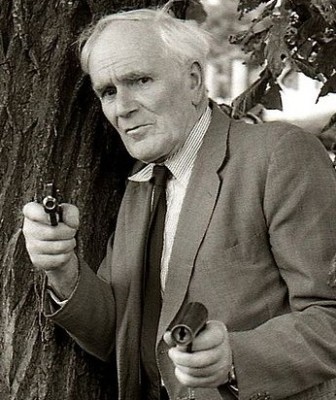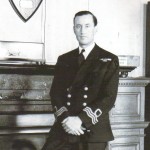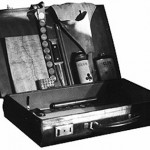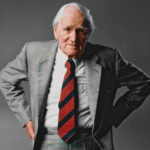 Now pay attention, 007. Gadgets and secret pieces of hi-tech have always been a beloved part of the James Bond universe, in both the books and in the EON films, and the blur between fact and fiction is often commented on.
Now pay attention, 007. Gadgets and secret pieces of hi-tech have always been a beloved part of the James Bond universe, in both the books and in the EON films, and the blur between fact and fiction is often commented on.
Every time a real-life secret spy gadget created in the Second World War appears at an auction, for example, inevitably the British media will give the news some very ‘Bondian’ coverage, often referring to the fictional on-screen gadget master ‘Q’.
Recent years have seen a pair of game-playing dominos, concealing a map, and a tiny camera hidden in a pocket-watch, among the fascinating items sold at an auction, together with a smoking pipe which contained a hidden dagger. The gadgets were distributed during the war by MI9, the secret British government department that specialised in helping stranded or escaping British services personnel to get out of enemy occupied Europe.
The media coverage of such items at auctions always creates much interest, both in the UK and internationally. Indeed, bidders at such auctions often come from around the world, including from the USA, Italy, Spain and Canada. And the coverage is always a great excuse for the UK media to indulge in some exploration of 007 and the role that gadgets have played in the Ian Fleming books and the EON film franchise. Similarly, interest in the activties of MI9 across wartime Europe also beguile commentators.
Gadgets Galore
As many Bond fans know, the creator of 007, Ian Fleming, had himself been an avid collector of inventions and gadgets, and many people feel that the decades of the 1950s and 1960s, when Fleming was penning his Bond thrillers, were decades when interest in new inventions and gadgets reached new heights. After the austerity and rationing of the 1940s, the 1950s saw the mass production of new goods and gadgets really take off, and Fleming was keen to exploit this for his espionage novels.

It should also be remembered that, as a former Intelligence officer during the War (he had served in Naval Intelligence in Whitehall), Fleming had intimate knowledge about some of the gadgets created for secret warfare and sabotage purposes, and later drew upon this information for ideas for his 007 plots.
His creation of ‘Q branch’, for instance, was rooted in the real-life secret branch that had been created in 1940 as part of the Ministry of Supply. This branch came to supply equipment and gadgets to both MI6 (the Secret Intelligence Service) and the new SOE (Special Operations Executive), the latter of which Churchill had instructed to ‘set Europe ablaze’ through sabotage and assassination. The branch also designed a range of secret devices to aid escapees from Europe. Fleming was well briefed on all this, and it fired his imagination so much that he later drew on al this knowledge when penning his 007 adventures.
It is also believed by Bond historians that Charles Fraser-Smith, one of the real-life Q-branch boffins, was an influence on Fleming’s later creation of the ‘Quartermaster’ and his specialist branch that supplies James Bond with his gadgets in the novels. Fleming was said to have been especially intrigued by a hollowed-out golf ball invented by Fraser-Smith, in which was hidden a compass to be sent to Allied prisoners-of-war to aid their escape plans. Fleming ‘borrowed’ this idea for his fourth Bond novel, Diamonds are Forever, where it is used to transfer uncut diamonds.

And, as all dedicated Bond aficionados are well aware, Fleming also drew upon his wartime memories for the special briefcase supplied to 007 in From Russia, With Love, a case that also appeared in the film version of the novel. In many ways, it was this case that kick-started the public’s love of the increasingly outlandish gadgets that became an almost traditional feature of the EON movies. This was probably exemplified in the gadget-laiden Aston Martin in Goldfinger. Who can forget the exasperated look on Q’s face in the film (played by the late, great Desmond Llewelyn) when 007 (Sean Connery) appears to think Q is joking about the ejector-seat? ‘I never joke about my work, 007’.
The testy relationship between Bond and Q was continued in Thunderball, although some critics felt that the gadgets were beginning to take over the movies. But Q was obviously very proud, and very protective, of his inventions, and his view that 007 did not look after the gadgets with sufficient care became a running theme in the film series.
Interestingly, according to files released over the years, the American CIA seriously looked at some of the gadgets in the Bond movies to determine whether they would be viable in real-life. There is some evidence that the Russian KGB also did the same. Truly, fiction was blurring with fact, and vice-versa!
‘Q’ as Icon
As the late Sir Roger Moore noted in his book Bond on Bond (2012), while ‘Q’ became one of the most well known and favourite of the returning characters in the James Bond film series, his actual origins in the Fleming books are not all that clear. While there is a reference to ‘Q’ in chapter 3 of Fleming’s debut Bond novel Casino Royale, and Q-branch appeared occasionally in the other novels, it is really in the big-screen adaptations where the character of ‘Q’ really came alive.

Moreover, as Sir Roger also observed, Q’s appearance in a Bond film was always highly anticipated, ‘so you can imagine my disappointment when he wasn’t in Live and Let Die. Apparently, it was decided that Bond was relying a little too much on gadgets, and Q would therefore be dropped’. However, as Moore revealed, there was such an outcry over this after the movie’s release that the character was immediately written back into the next film, The Man With The Golden Gun.
Even in the non-official Bond film Never Say Never Again (1983), the producers felt it was important to have a Q-like character, Algy (played by Alec McCowen) as head of Q branch. The ‘equipment officer’ had truly become a necessary and beloved part of the Bond universe. In fact, like ‘M’ and Moneypenny, the character had become a mainstay of the screen adventures of James Bond, and audiences loved to discover what ingenious gadget would be issued to MI6’s top agent in the field in each new entry in the franchise.
Craig and ‘Q’
In the Daniel Craig era, it would seem that a decision was again taken to have Bond rely much less on gadgets, and ‘Q’ did not appear in Craig’s first two 007 adventures. Yet, in Skyfall, director Sam Mendes took the popular decision to have the character return to the Bond franchise, but in a re-imagined role. Cannily, while he was still a boffin, the new younger ‘Q’ was able to remind Bond that the world had moved on and that the new arena of espionage that 007 had now returned to was no longer a place where MI6 supplied fancy gadgets or exploding pens.
On the other hand, in both Skyfall and Spectre, it was clear that ‘Q’ (played by Ben Whishaw) was still a crucial ‘equipment officer’ (as Fleming would put it) and proved to be a huge help to Bond’s successful completion of his missions in the field, especially in relation to hi-tech communications, counter-hacking and fighting off other new threats. And, to the great anticipation of Bond lovers everywhere, ‘Q’ also returned in Craig’s final Bond movie, No Time To Die.
In recent interviews, Ben Whishaw has said that he has no idea if his version of ‘Q’ will return, but hinted that he would of course be interested if offered the opportunity. And the presence of the ‘equipment officer’ could be a great way to help settle a new actor into the role of 007 and reassure audiences that James Bond is still prepared to use the latest hi-tech when required. If ‘Q’ is indeed brought back for Bond 26, it will surely be a case of ‘Welcome back, ‘Q’: we’ve been expecting you’.

